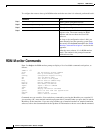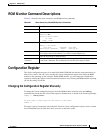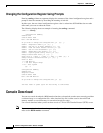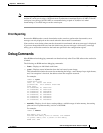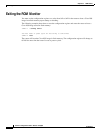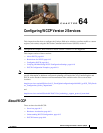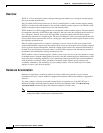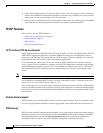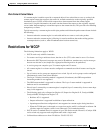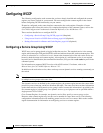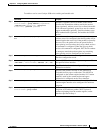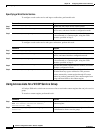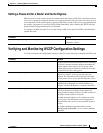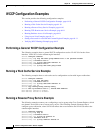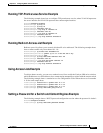
64-4
Software Configuration Guide—Release 15(02)SG
OL-23818-01
Chapter 64 Configuring WCCP Version 2 Services
About WCCP
2. Each content engine announces its presence with a "Here I Am" message and a list of routers with
which it has established communication. Similarly, the routers reply with their view (list) of content
engines in the service group through "I See You" messages.
3. Once the view is consistent across all content engines in the cluster, one content engine is designated
as the lead and sets the policy that the switches need to deploy in redirecting traffic.
WCCP Features
These sections describe WCCP features:
• HTTP and Non-HTTP Services Support
• Multiple Routers Support
• MD5 Security
• Web Content Packet Return
HTTP and Non-HTTP Services Support
WCCP enables redirection of HTTP traffic (TCP port 80 traffic), as well as non-HTTP traffic (TCP and
UDP). WCCP supports the redirection of packets intended for other ports, including those used for
proxy-web cache handling, File Transfer Protocol (FTP) caching, FTP proxy handling, web caching for
ports other than 80, and real audio, video, and telephony applications.
To accommodate the various types of services available, WCCP introduces the concept of multiple
service groups. Service information is specified in the WCCP configuration commands using dynamic
services identification numbers (such as “98”) or a predefined service keywords (such as “web-cache”).
This information is used to validate that service group members are all using or providing the same
service.
Note The Catalyst 4500 series switch supports up to eight service groups.
For information on supported WCCP version 2 services with ACNS version 5.2 software, refer to the
Release Notes for Cisco ACNS Software, Release 5.2.3.
The content engines in service group specify traffic to be redirected by protocol (TCP or UDP) and port
(source or destination). Each service group has a priority level assigned to it. Packets are matched against
service groups in priority order and redirected by the highest priority service group that matches traffic
characteristics.
Multiple Routers Support
WCCP enables you to attach multiple routers to a cluster of cache engines. The use of multiple routers
in a service group enables redundancy, interface aggregation, and distribution of the redirection load.
MD5 Security
WCCP provides optional authentication that enables you to control which routers and content engines
become part of the service group using passwords and the HMAC MD5 standard. Shared-secret MD5
one-time authentication (set using the ip wccp [password [0-7] password] global configuration
command) enables messages to be protected against interception, inspection, and replay.



